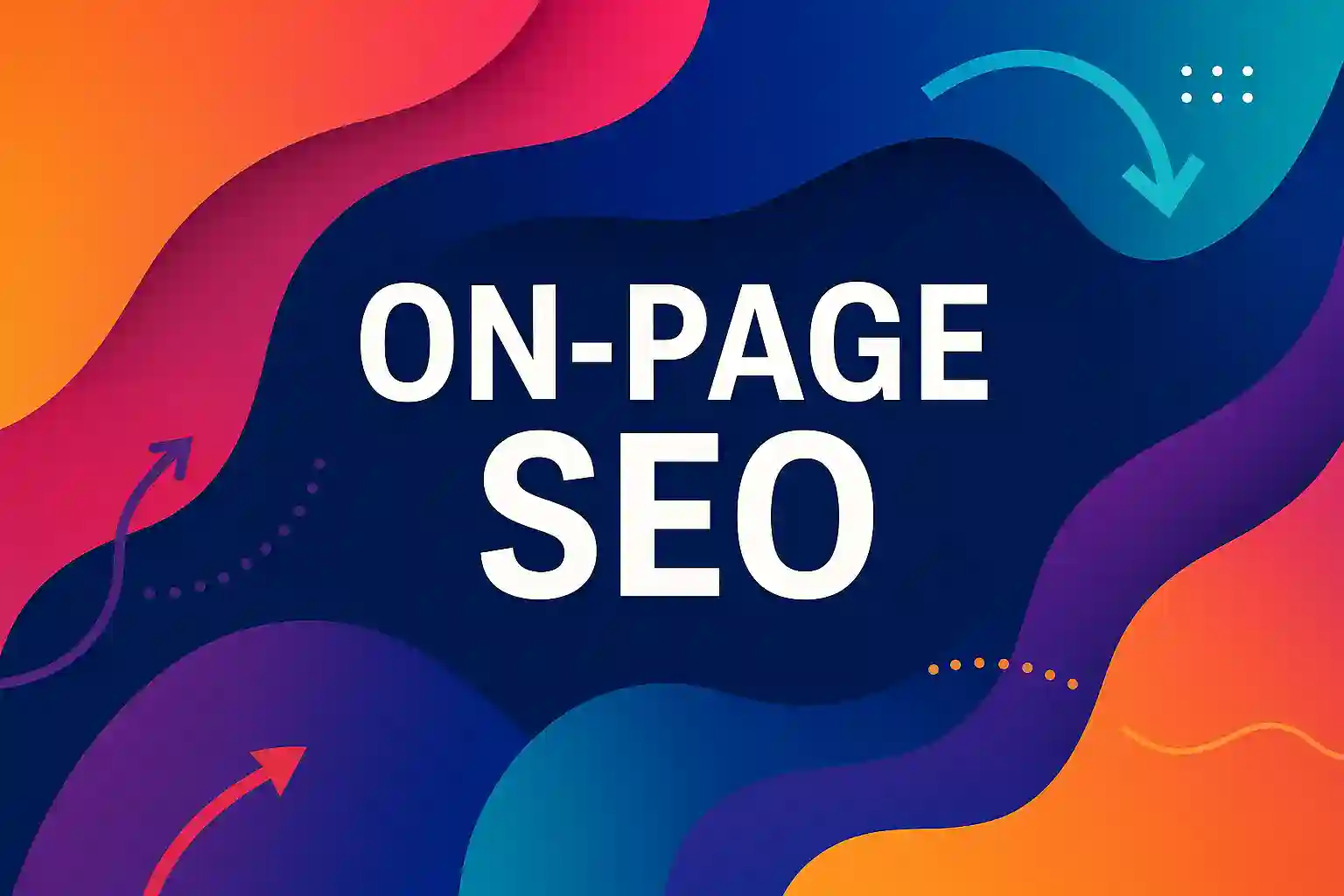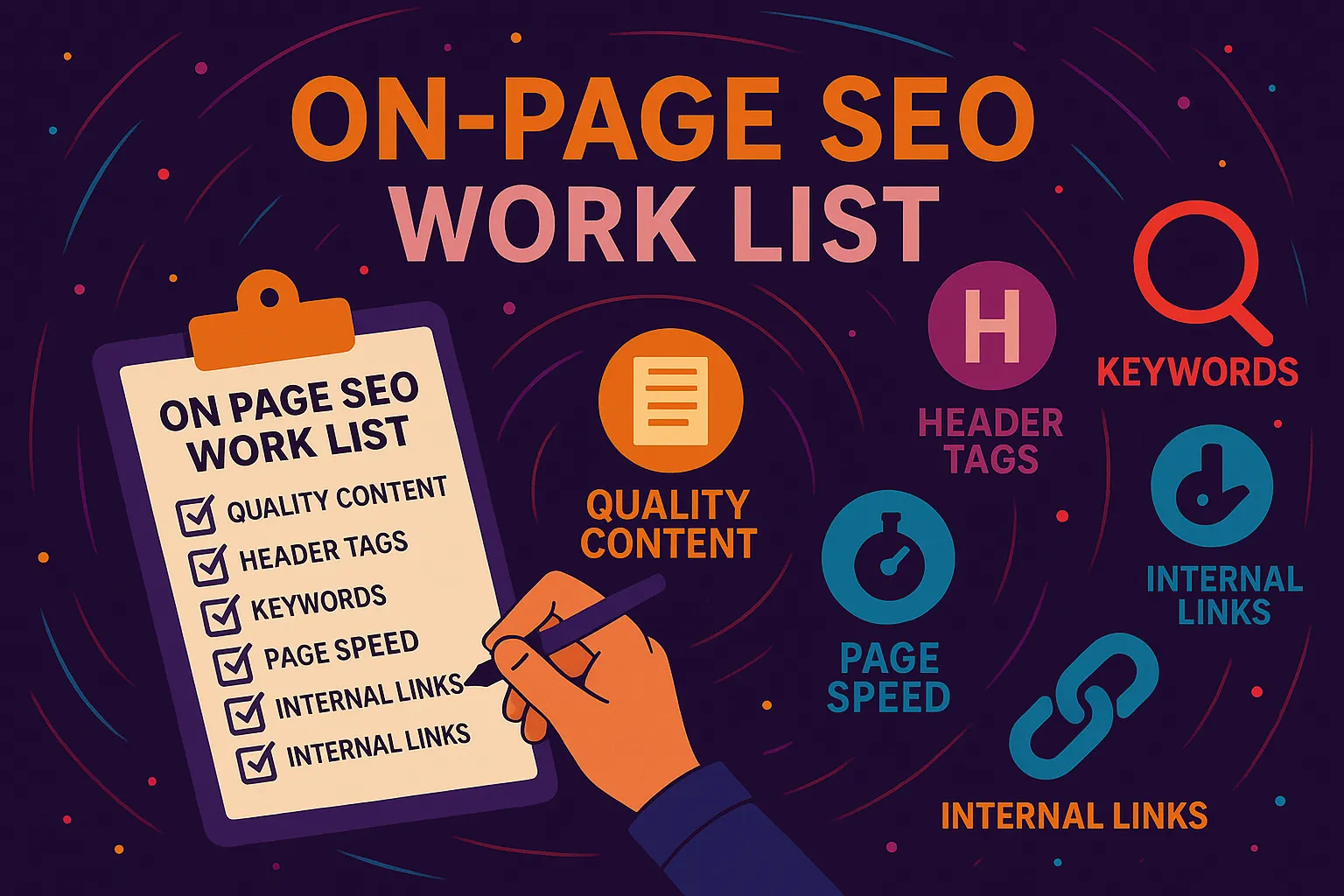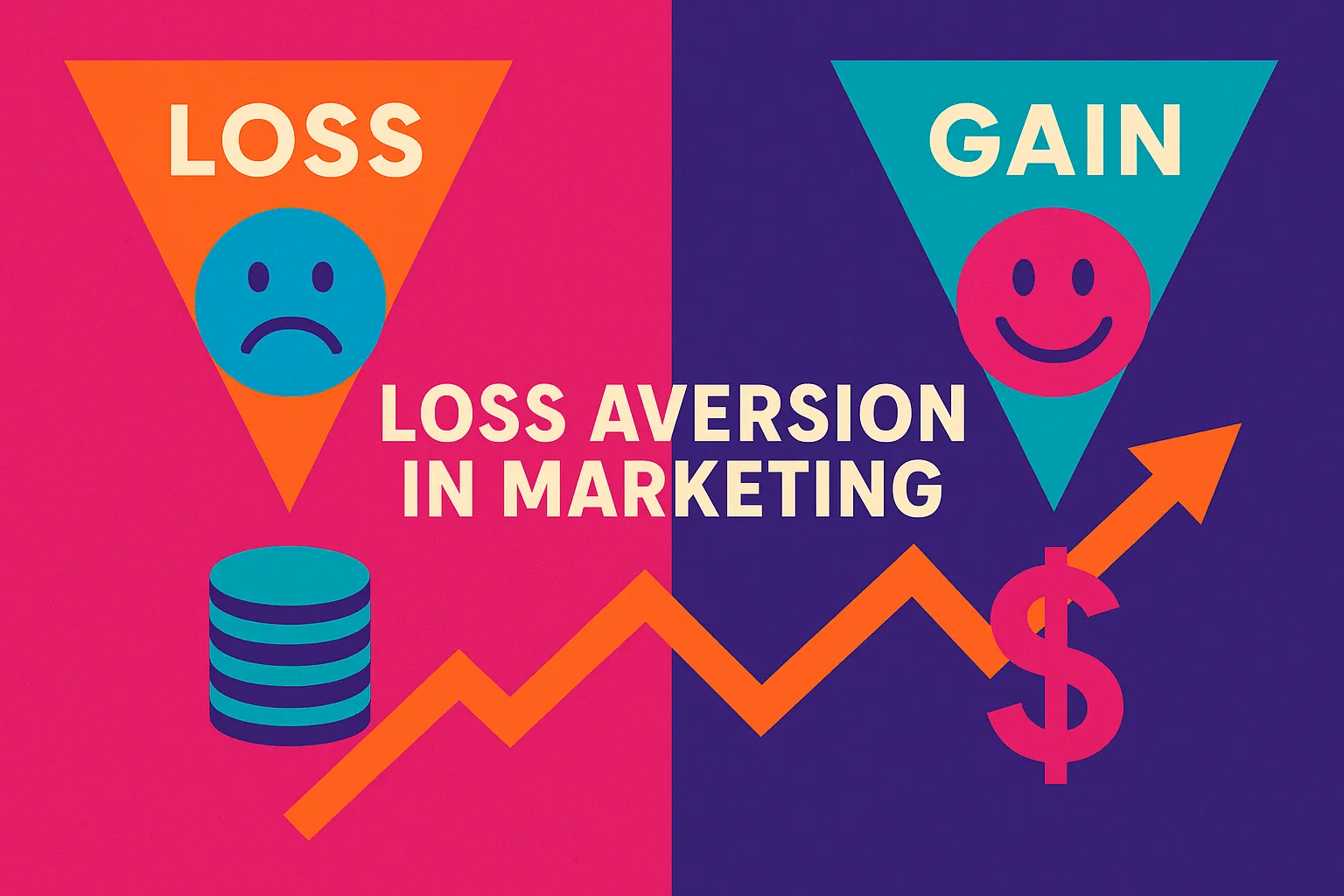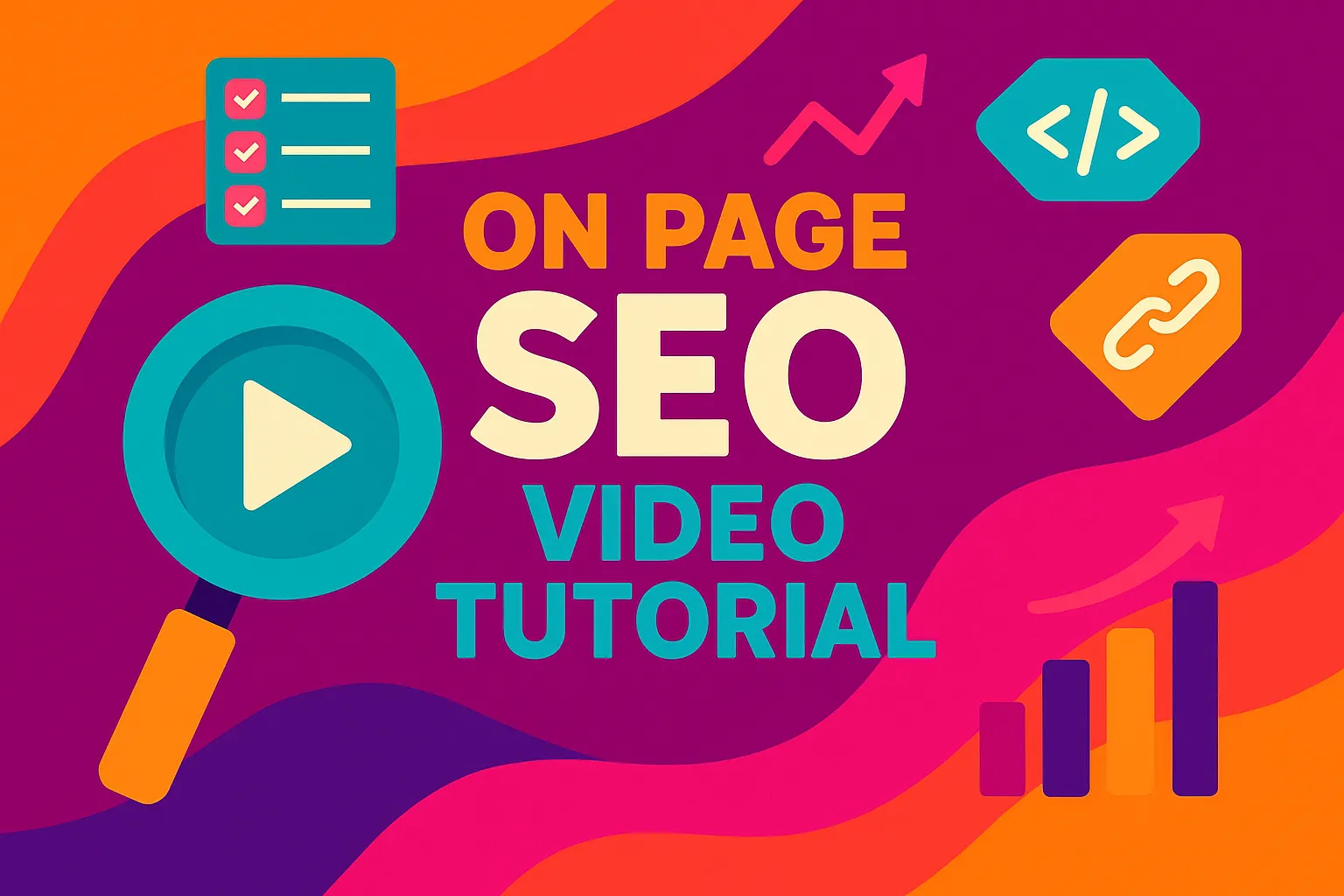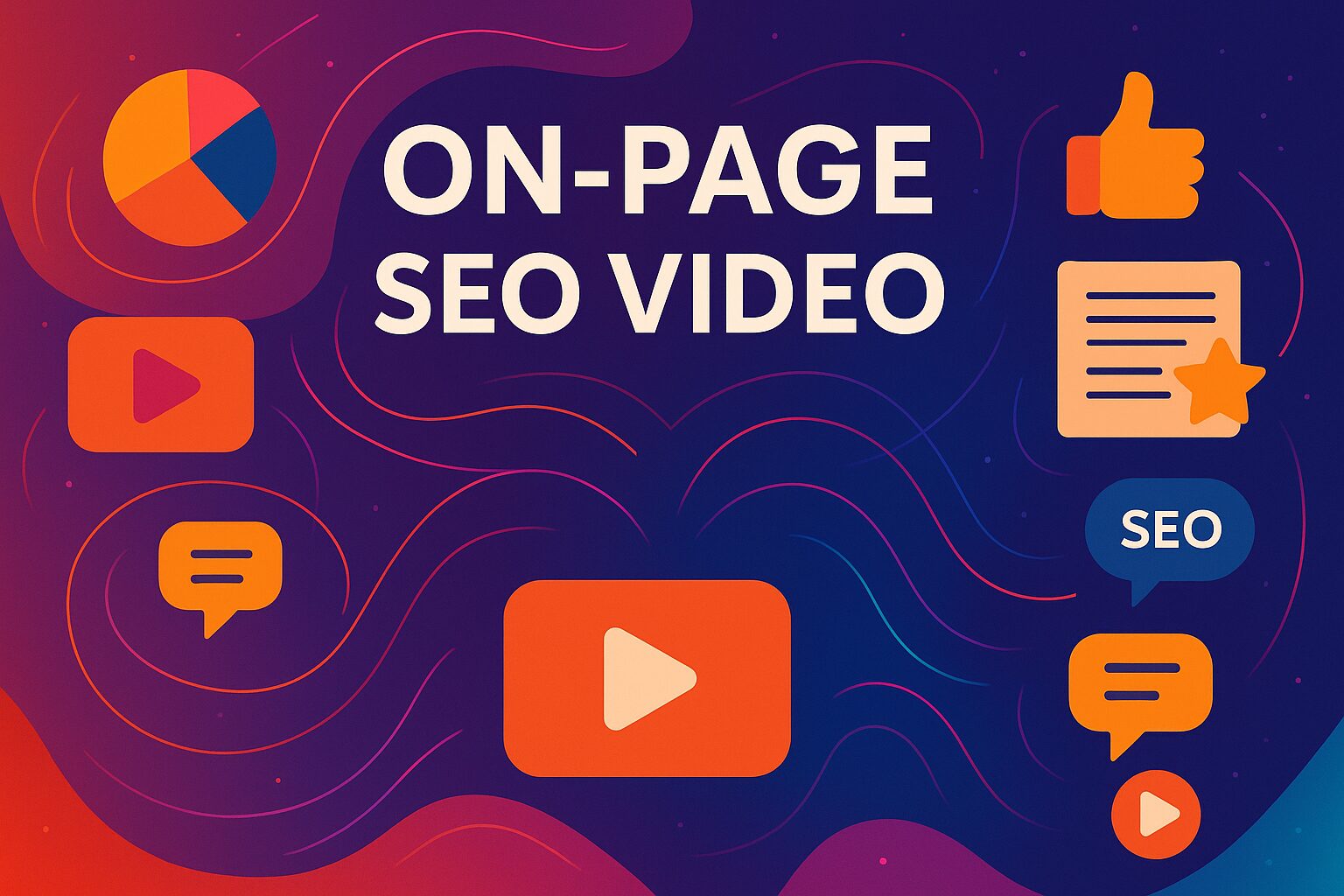What is On-Page SEO?
At its core, On-Page SEO is the practice of optimizing the pages on your website so they can be easily found, understood, and ranked by search engines like Google. It covers all the stuff you can control directly on your site.
That means titles, content, HTML tags, URLs, internal links, and even how your images are labeled. Think of On-Page SEO like organizing a bookstore. If your books aren’t labeled well or placed on the right shelves, no one finds them.
The same goes for your web pages. They need structure, clarity, and intention.
When I first launched Vibe Branding over a decade ago, we learned fast that flashy design alone wouldn’t get clients the traffic they wanted. Search engines needed to understand what a page was about, and users needed to enjoy being on the site.
That’s where On-Page SEO stepped in as a game changer. It’s not just for big corporations or SEO nerds.
Whether you’re a startup founder or running a family business, mastering On-Page SEO helps your ideal audience find you faster.
TL;DR (Too Long; Didn’t Read)
- On-Page SEO is everything you do on your website pages to help them rank better on search engines.
- It includes optimizing titles, meta descriptions, content, images, headings, URLs, and more.
- This post shares real-world advice based on 10 years of SEO experience at Vibe Branding.
- You’ll learn why On-Page SEO matters, how to structure your pages, and avoid common mistakes.
- We also cover the best tools and how often you should update your SEO.
Why On-Page SEO is Essential for Rankings and Engagement
If you’re wondering why On-Page SEO even matters, the answer is simple: without it, your website is invisible. Google doesn’t randomly pick the top results.
It scans your content, structure, and code to decide what deserves a spot on page one. Over the years, we’ve helped dozens of clients climb rankings just by focusing on better On-Page SEO. We didn’t throw money at ads or beg for backlinks.
We just made their content clearer, faster, and more useful. User engagement also improves with On-Page SEO.
Pages that load quickly, are easy to read, and are structured with intent hold people’s attention longer. That means lower bounce rates, more time spent per page, and a higher chance of converting visitors into customers.
Google notices that kind of behavior. When users engage with your site, your rankings benefit. It’s a feedback loop you definitely want to create.
One of our clients in the wellness space saw a 78% increase in organic traffic within three months after a full on-page optimization. All we did was fine-tune their headings, clean up their URLs, and improve content readability.
No gimmicks. Just clean, effective On-Page SEO.

Structuring Your Pages for SEO: HTML, Headings, and Layout
Let me tell you something we often see with new clients: their content is great, but it’s buried under poor formatting. One big block of text or broken layout can kill your rankings.
Structuring your content with clear headings (like H1, H2, and H3 tags) makes a world of difference. Search engines use those headings to understand what your page is about, and users scan them to decide if they should keep reading.
Start every page with one H1 that includes your target keyword. Then use H2s for main sections and H3s for sub-points.
It’s like an outline for both humans and machines. We also recommend using bullet points and numbered lists when possible.
And don’t forget to keep your paragraphs short and sweet. Aim for 3-4 lines per paragraph—it’s easier on the eyes.
Proper HTML structure isn’t just about visibility. It helps screen readers for accessibility and ensures your page works well across all devices.
I always tell clients: clean code is silent SEO. It doesn’t show up in a pretty graph, but it’s working behind the scenes to help your site rank.
Titles and Meta Descriptions: Tiny Tags, Huge Impact
Your title tag is like the headline of your webpage in search results. If it’s boring, confusing, or too long, people scroll right past it.
Keep it under 60 characters, use your On-Page SEO keyword early, and make it catchy without being clickbait. Meta descriptions don’t directly affect rankings, but they influence click-through rate.
A good one can turn impressions into traffic. At Vibe Branding, we often A/B test meta descriptions to see what drives more clicks.
We’ve seen simple changes—like adding a number or calling out a benefit—increase CTR by over 20%. Your meta description should act like a short pitch.
Make it clear, relevant, and compelling. For example:
- Title: On-Page SEO Tips for Better Google Rankings
- Meta: Learn how to improve your site rankings with these expert On-Page SEO tips. Real-world examples included.
That combo makes it clear what the page is about and why someone should care. If your site is struggling to get search traffic, your titles and meta tags might be the first thing to fix.

Writing Content That Actually Ranks
We’ve said this a hundred times to clients: content is king, but only if it’s optimized. Throwing a bunch of words on a page won’t help unless they’re structured around search intent.
You need to understand what your audience is searching for, why they want it, and how to give it to them better than anyone else. Start by placing your main keyword (like “On-Page SEO”) in the first 100 words.
That signals relevance to Google. Then, sprinkle related terms throughout the post naturally.
Don’t force it. Modern algorithms understand synonyms and context.
So instead of repeating your keyword 15 times, focus on covering the topic thoroughly. Also, longer content generally performs better—but only if it adds value.
A 2,000-word post that rambles is worse than a tight 800-word one. Add images, data, examples, or even short videos to make your content more engaging.
At Vibe, we always encourage clients to go beyond the obvious. Share something others aren’t saying. That’s how you get backlinks and social shares, which further boost SEO.
Internal and External Linking: SEO’s Underrated Power Moves
Let’s talk about something we always prioritize but many websites ignore: links. Specifically, internal and external links.
Internal links help guide both your visitors and search engines. They show how pages are connected, which ones are most important, and help users discover more of your content.
When done right, it keeps visitors on your site longer and improves overall structure. One trick we use at Vibe Branding is to link newer pages to high-authority older pages.
That passes link equity and helps boost the visibility of fresh content. We also make sure the anchor text—the clickable words in a link—includes relevant keywords but still feels natural in the sentence.
None of that “click here” nonsense. External links matter too.
Linking to credible sources shows Google your content is trustworthy and well-researched. We encourage our clients to reference studies, data, or other reputable websites whenever possible.
Just make sure you’re linking to high-quality, non-competitive sources. When we did an internal linking overhaul for a real estate client, their time-on-site increased by 32%.
That alone told us users were finding what they needed and exploring more. Internal links aren’t just SEO tricks; they improve the actual user experience—and that’s what modern SEO is all about.
Tools We Use to Supercharge On-Page SEO
After ten years in this space, we’ve tested almost every SEO tool out there. Here are a few that we always go back to when managing On-Page SEO for our clients:
Semrush On Page SEO Checker helps you identify missing elements like keywords in headings or title tags. Google Search Console shows you which pages are getting impressions and clicks, and where there’s room for improvement.
PageSpeed Insights helps measure and improve load times—a huge UX and SEO factor. Screaming Frog or Sitebulb are essential for full-site crawls.
They help us find duplicate tags, missing headers, and broken links. Moz Keyword Explorer is great for finding low-competition keyword opportunities that still drive traffic.
These tools don’t replace strategy—they amplify it. Knowing how to read the data and apply it correctly is what sets our team apart at Vibe Branding.

Avoiding Common On-Page SEO Mistakes
Some of the biggest SEO problems we fix are caused by avoidable mistakes. Things like duplicate title tags, missing meta descriptions, broken internal links, or pages that aren’t mobile-friendly.
Even having too many keywords in one paragraph can make your content look spammy and get flagged by Google. Another common issue is neglecting the structure of your content.
If your page is just a wall of text with no headings or visuals, readers will bounce fast—and so will your rankings. And don’t forget image optimization.
Big image files slow down your page. Always compress your images and add alt tags.
Keeping your content updated is also key. We’ve had clients come to us after their traffic dropped, only to find they hadn’t touched their content in over a year.
Search trends change, and so should your pages. Refreshing old blog posts or services pages with current data and improved structure can bring them back to life.
How Often Should You Review and Update On-Page SEO?
SEO isn’t set-it-and-forget-it. We recommend checking key on-page elements at least once a quarter.
Look for declining traffic, shifts in rankings, or changes in user behavior. Some industries require monthly updates, especially if the content is time-sensitive.
At Vibe Branding, we do a deep audit every three months for our long-term clients. That includes title tag review, content freshness, internal link optimization, and speed performance.
We also track CTR and engagement metrics to see what’s working and what’s falling behind. Even small updates can make a big difference.
Rewriting an outdated meta description, fixing a slow-loading image, or adding a new internal link are all small wins that compound over time. Think of On-Page SEO as digital maintenance.
The more consistent you are, the less likely you’ll need a big fix down the road.
Final Thoughts: Why On-Page SEO is Non-Negotiable
In today’s world, if you’re not ranking, you’re not relevant. And On-Page SEO is the foundation for everything else.
Backlinks, ads, social shares—they all depend on your site being structured, clear, and useful. That’s what On-Page SEO gives you.
At Vibe Branding, we’ve built our reputation on delivering lasting results. We don’t chase trends. We build websites that are fast, structured, and optimized with purpose.
That’s how we help clients dominate search results and stay there. If your site isn’t performing the way you hoped, start with the basics.
Start with On-Page SEO. It’s not the flashiest part of digital marketing, but it’s the part that works every single time.

